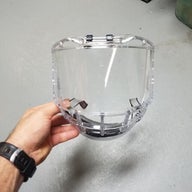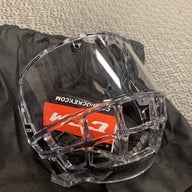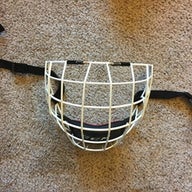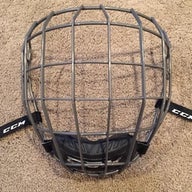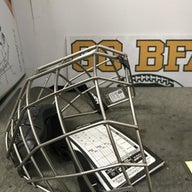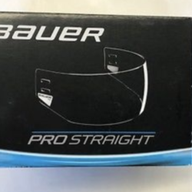When did helmets come into play?
Hockey helmets didn’t start to become popular until around 1933, when an incident between a Bruins defender and a Maple Leafs player resulted in a cracked skull, effectively ending the Toronto player’s career. Most NHL players remained reluctant to wear helmets until 1968, when Bill Masterton suffered a fatal brain aneurysm. Hockey helmets finally became mandatory in 1979.
Today, NHL players are free to wear helmets with cages or visors, and many still shun the extra protection -- perhaps unsurprisingly.
Cages vs. Visors
After minor hockey, players are allowed to decide which type of face and eye protection they want to use. The main three choices are: visors, cages or half shields. There are a few leagues that require players to wear hockey cages.
A hockey cage provides full protection of the face and mouth. Cages are great because they provide a heightened sense of confidence, as players are guarded from sharp blades and pucks. The downside of cages are that they’re a bit heavier than visors, and some players feel as though cages obstruct their vision too much.
Hockey visors, on the other hand, are lighter and easier to see through than cages. If you opt for a visor or half shield, just know you’ll be compromising on safety a little bit.
What's popular? Best cages, visors and shields
There are a variety of different hockey cages and visors on the market. Some visor brands we’d recommend include Oakley and Bauer. If you’re looking for a cage, Bauer also makes great cage options. The Bauer Re-Akt Titanium Face Mask is a particularly popular model, as it's 50 percent lighter than carbon steel face masks. Its patented oval wire is almost undetectable by your eyes, so skaters can play with confidence and unobstructed vision. The Oakley Pro Straight Visor is another great hockey shield option. It has a traditional cut that's proven popular over the years, featuring a shatterproof polycarbonate construction that allows you to see the ice clearly.
